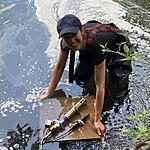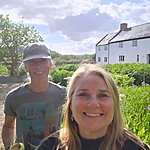You need to be registered to request to join groups.
Sign Up
Marsh Dykes & Thamesmead Water Quality Group
Leaderboard

3700 Points

2170 Points

850 Points

360 Points

290 Points
About
The Marsh Dykes & Thamesmead water quality group is made up of a combination of the fantastic community groups who work to improve river and community health through activities like litter picks, habitat creation and management, river restoration, and ecological and water quality monitoring in the area.
For more information about the catchment and the catchment partnership, please follow these links:
https://storymaps.arcgis.com/collections/2eb0906cde634edc95e1683eb16011ad
https://environment.data.gov.uk/catchment-planning/OperationalCatchment/3298
Water testing protocol
Sewage pollution, road runoff and agricultural pollution are the main factors negatively impacting the water quality in the catchment. A'WaterBlitz' was carried out on 25th April 2024 to provide a snapshot of the impact of sewage pollution on the catchment's water quality around the catchment.
As a result of this WaterBlitz, we will be able to see where the sewage pollution hotspots and sites with good water quality are located. This has also created a starting point for us to set up monitoring sites at key locations across the catchment, aiming to gather more regular water quality data in order to investigate the baseline and understand the magnitude and sources of pollution.
Dissolved phosphate and ammonia are indicators of sewage pollution, so the dedicated citizen scientists of the Thamesmead's Water Quality Group will monitor these sites using:
Hanna checkers for phosphates (low-range) from 0.0 to 2.5 mg/L
Hanna checkers for ammonia (low-range) from 0 to 3 mg/L and ammonia (medium range) from 0.00 to 9.99 mg/L
Some of these monitoring sites are being monitored by citizen scientists using the urban riverfly monitoring initiative (RMI) methodology and devices that measure physical parameters like temperature, pH and turbidity.
